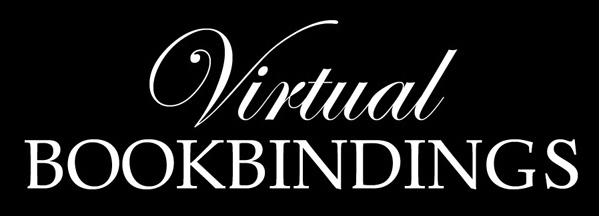

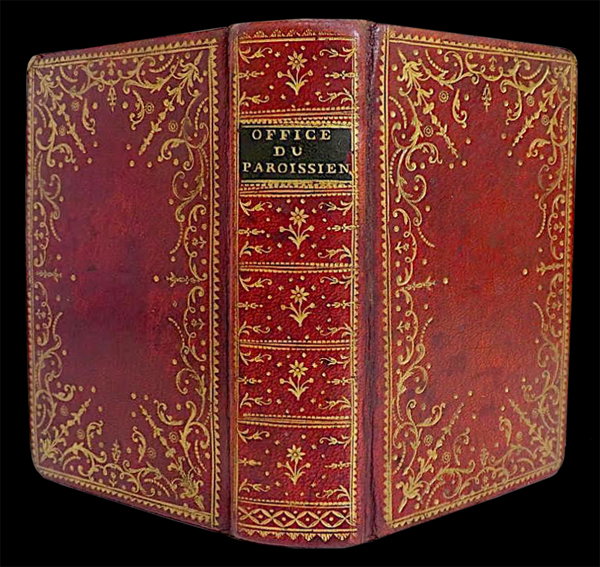

| I was very lucky to see the binding shown above on eBay last week, here was a chance to explore in high resolution scans some of the imprints that we have been researching on some previous Post Douceur pages in 2019 (click here to see them). One of our main concerns in those pages was an imprint that Giles Barber (2013) catalogued as DCT 25. |
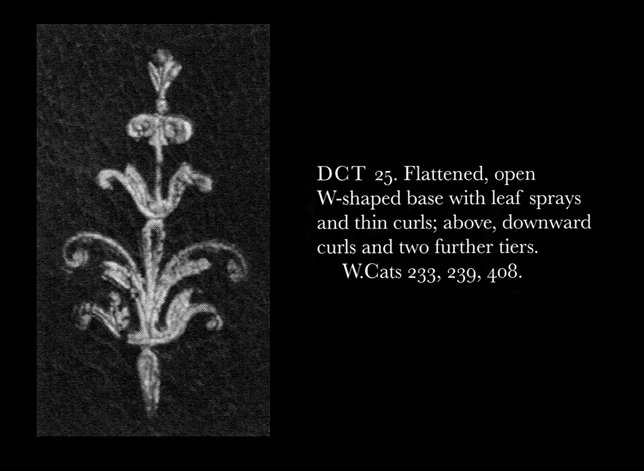
| In Comparative Diagram 1, I show the critically important DCT 25 from Barber's 2013 catalogue. (Catalogue of Printed Books and Bookbindings: The James A. de Rothschild Bequest at Waddesdon Manor. By Giles Barber, August 28, 2013), He lists three other bindings that he found bearing this imprint and yet this example that he has chosen would have to be one of the poorest. The three bindings W.Cat.233, W.Cat.239, and W.Cat.408 are very important in our study of this particular workshop, in as much as Barber has catalogued many of the tools from these three bindings they will be an invaluable resource for our investigations. |
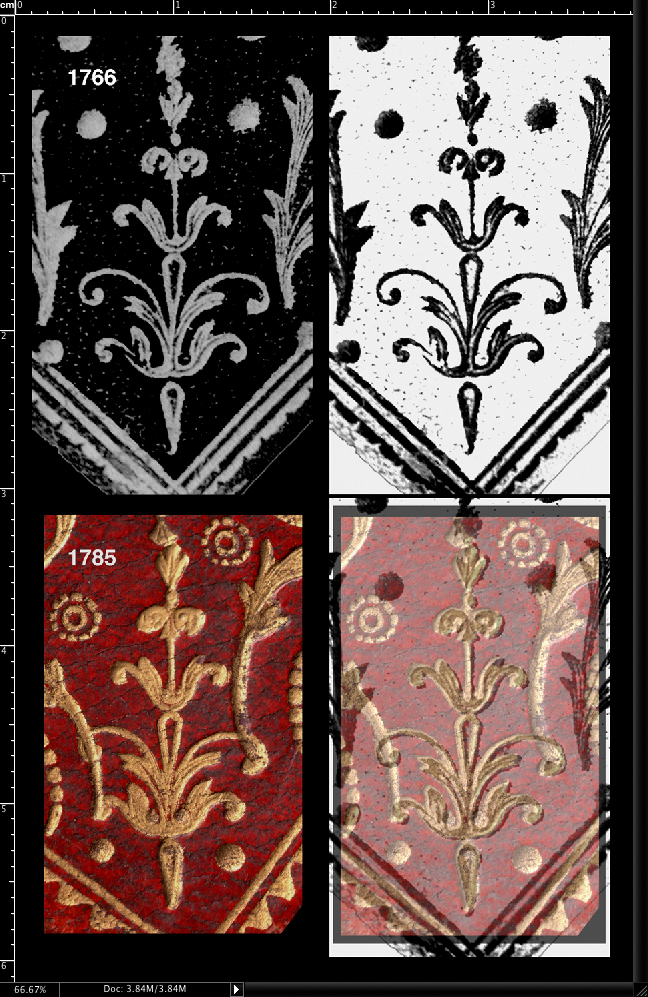
| In Comparative Diagram 2, we see an overlay of a 1766 DTC 25 and our 1785 example. In the overlay the 1766 has been inverted. You will notice that the 1766 example is like new and is clean and sharp and makes an excellent model to compare with our high resolution scan. We see in the overlay a perfect match in terms of overall size, thus we confirm that our Rahir reproduction (click here to see it) is at a very accurate scale. This tool could be a late Louis Douceur tool and will be a key facture in solving the riddle of how it appears in 1766 bindings as well as 1785 bindings, and who exactly was employing this tool? |
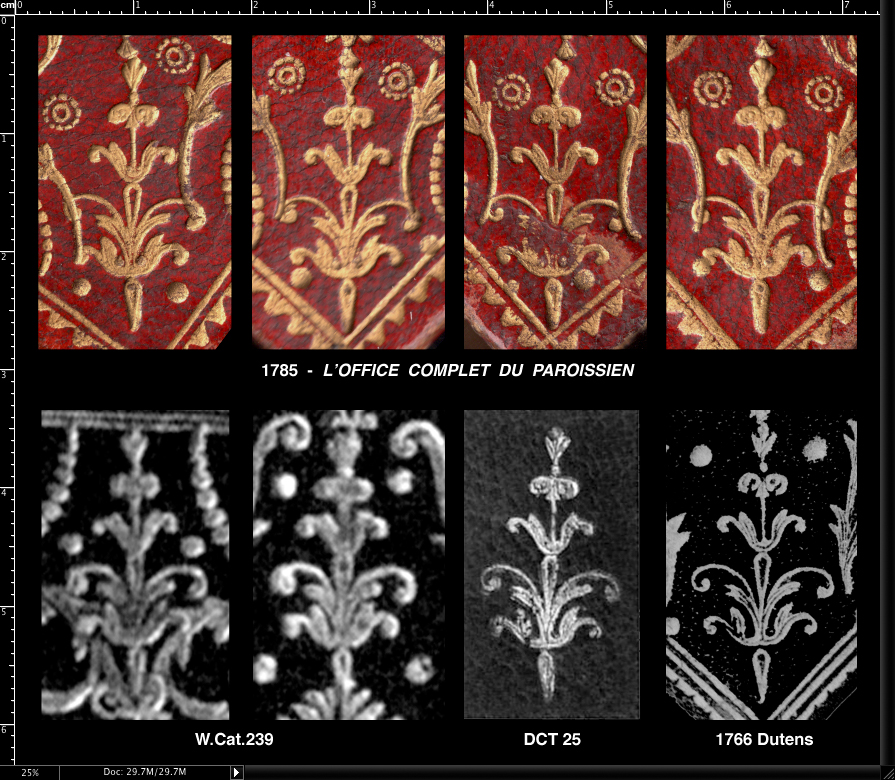
| In Comparative Diagram 3 we see a number of 1785 DCT 25 examples compared with some poor examples extracted from W.Cat.239, there are perhaps enough similar characteristics to show that this is the same tool. |
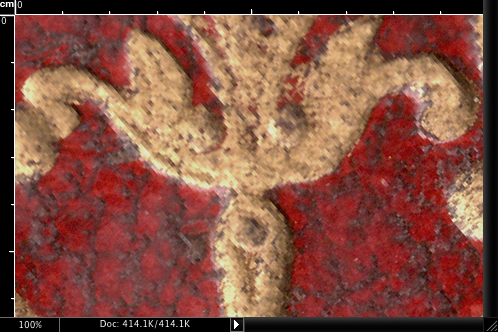
| In Comparative Diagram 4, I show a highly unusual feature found in the 1785 DCT 25 examples that you can see in all of them in Comparative Diagram 3. This is some thing that I have never encountered before, it appears to be a deliberate attempt to change the shape of this tool by adding small circular dots to the tool. These dots are in the same place in each example indicating that they are a now permanent part of the tool and by what technique they were added or why I have no idea. However that definitely were not visible in the 1766 imprints. Barber's DCT 25 model is not clear enough to show this although it looks like there may be something in this area of the tool. The importance of this observation of this unusual feature will be in identifying the chronology of the change in this tool. It may turn out that our 1785 Paroissien was decorated some years after 1785. |
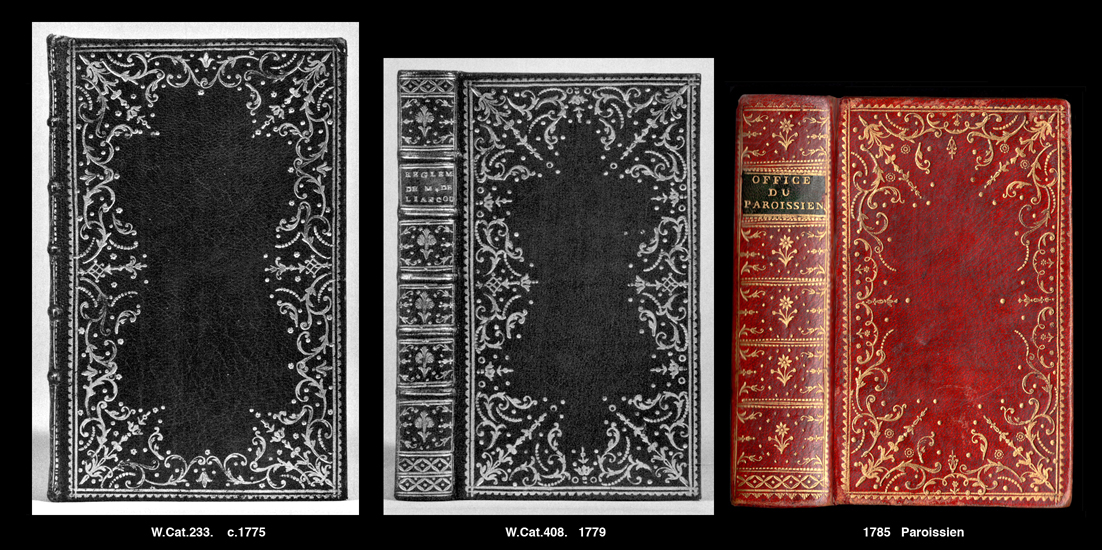
| In Comparative Diagram 5 we see Barber's W.Cat.233 and 408 compared with the 1785 Paroissien, the decoration of these bindings has been accomplished with a good number of the same tools. These bindings are especially linked via Barber's PAL 44. |
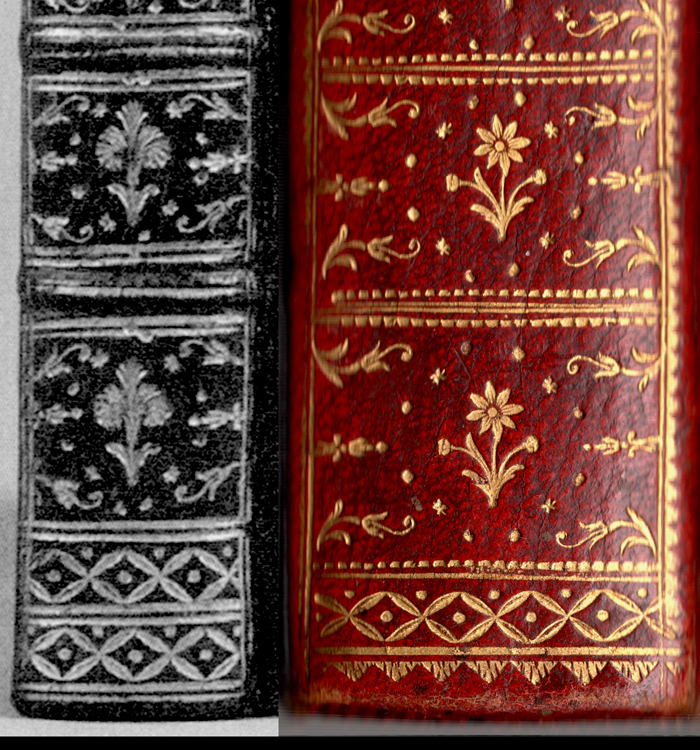
| In Comparative Diagram 6 we notice that these spines share identical tools. One major difference is the raised bands of W.Cat.408, as well as the lack of the dashed filet that frames the spine panels. |
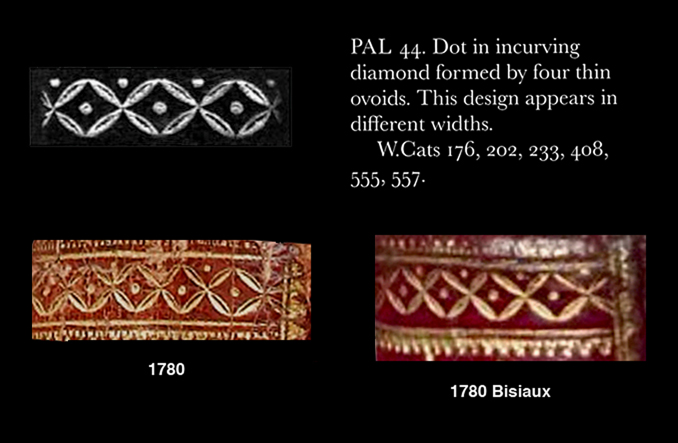
| In Comparative Diagram 7, I show Barber's PAL 44 compared with two examples from my 2019 pages. The real question mark in all this is the 1780 Bisiaux binding. It would be easy to proclaim that Bisiaux is the author of all these post Douceur bindings, however it would be all based on the slim evidence of a single binding. Bisiaux changed his decorative style somewhere along the line if he made these typical dentelle bindings, 99% of all published Bisiaux bindings are decorated in the suddenly popular neoclassical styles. |
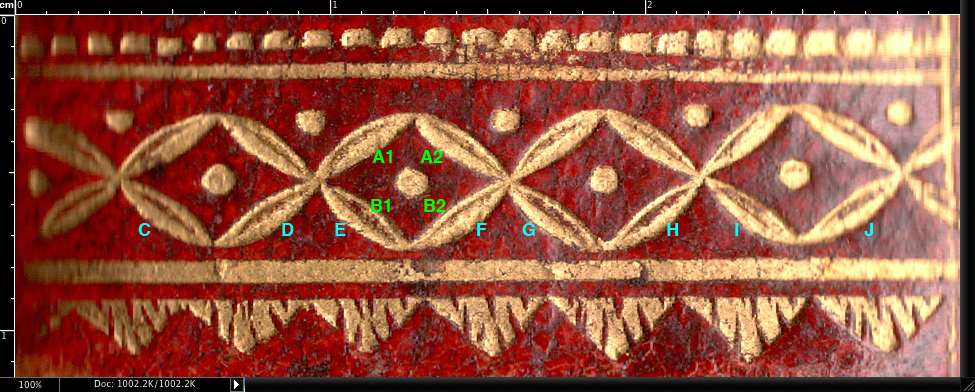
| In Comparative Diagram 8 we are able to see Pal 44 in high resolution and here we notice things that were barely evident previously, A1 and A2 are shown beside the thicker part of what look to be something akin to a propeller blade. B1 and B2 are correspondingly thinner, this is the same in all cases, however this arrangement leaves the lower blades with the thickest part at the bottom. This bottom row of thick blades have been labeled C through to J, why? because these are not all of the same thickness F is decidedly thicker and this fact may be useful in defining this palette. Another detail that might be very hard to pinpoint without high resolution examples is the meeting point above A1 and A2, this differs from the rest being slightly curved to form a small clockwise wave in the negative space. |
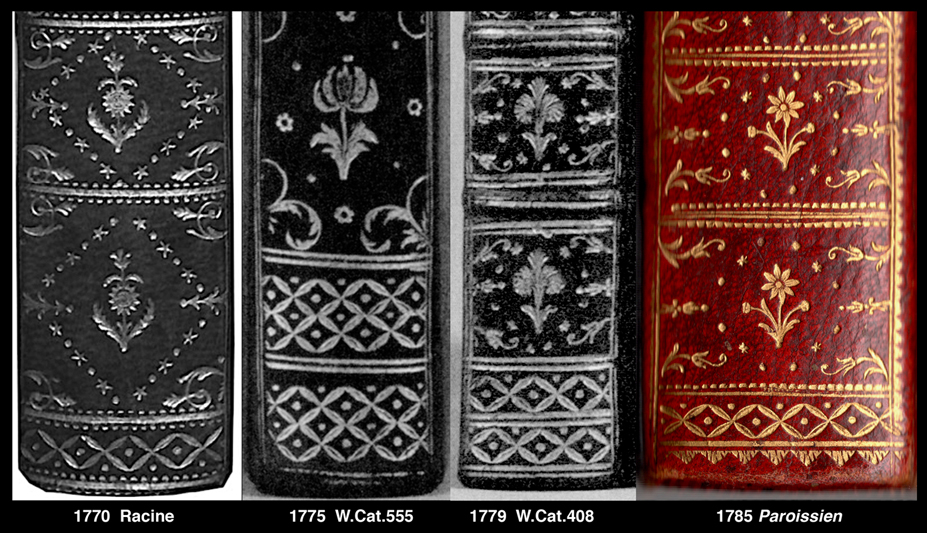
| In Comparative Diagram 9. I show some very interesting PAL 44 examples, the first a 1770 Racine with Derome le jeune imprint dj-16 in the center of the spine panels. I do not think that PAL 44 is a Derome tool, I suspect that this spine may have been decorated by someone other than Derome le jeune with a mixture of his own tools and those of Derome. If PAL 44 was a Derome tool we would expect to see it more often and find it in bindings that we can definitely attribute to him. I have only seen two examples of this palette on Derome bindings, both are on identical bindings. See Erick Aguirre Le libraire Guillaume-Luc Bailly et l'atelier Derome le Jeune. |
|
click here to return to the HOME page. click here to see an INDEX of the 2017 pages. see below links to previous work |
| Even experts are sometimes wrong, before you spend thousands on a book, please do your own research! Just because I say a certain binding can be attributed to le Maitre isn't any kind of guarantee, don't take my word for it, go a step further and get your own proof. In these pages I have provided you with a way of doing just that. |
| Virtual Bookings, created by L. A. Miller | return to the Home page of VIRTUAL BOOKBINDINGS |